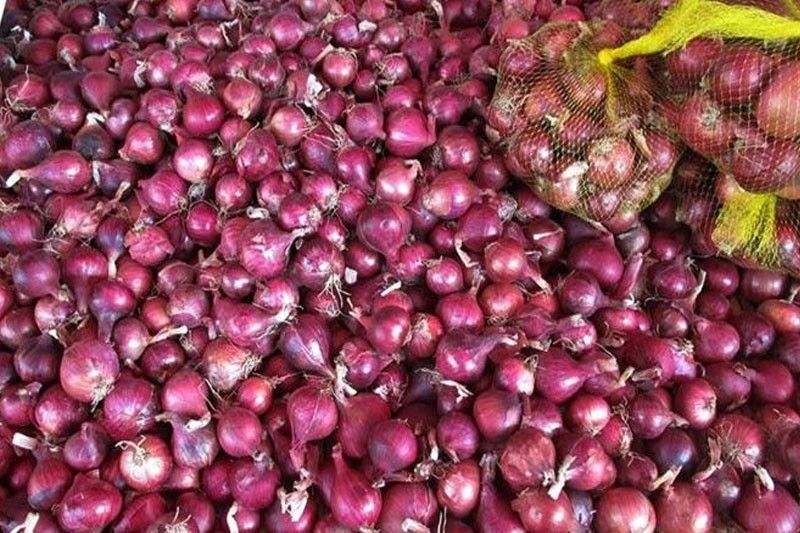In latest Senate probe, tear-inducing onion prices take center stage

MANILA, Philippines — As consumers welcomed the “golden age” of onions, a Senate probe into the skyrocketing prices of the Filipino cuisine staple produced less-than-savory findings.
Senators invited industry stakeholders, aside from officials from the Department of Agriculture, to the hearing on Monday.
As it is, the prices of onions have proved too rich for Filipinos in the past month. Data from the Department of Agriculture showed red onion prices shot up to as much as P700 per kilogram in Metro Manila by the end of 2022, figures countered by well-meaning but ultimately insensitive advice to refrain from buying them by the kilogram.
The increases were already painful for Filipino consumers as onion prices piggybacked on a rising inflation trend that effectively smashed purchasing power. Inflation rose 8.1% year-on-year in December, as the Bangko Sentral ng Pilipinas expects the prices increases to have peaked in the past month.
Romel Calingasan, a municipal agriculturist in Occidental Mindoro, told senators that the Marcos Jr. administration’s plan to curb onion prices for consumers would end up hurting them.
"The timing of the import permit is wrong," Calingasan he said.
The national government announced the plan in the past week, which would involve importing at least 22,000 metric tons of onions. However, the plan would quash any hopes that local farmes have of recouping losses after the harvest season.
Calingasan lamented that the import order should have been executed back in August 2022 because local farmers expect to begin harvesting in February.
"The supply and demand for onions should be computed so that they know when it’s best to issue an importation permit. This is so they don’t issue permits when harvest time comes," he said, warning that the current importation plan is "going to kill us.”
Imported onions are often sold cheaper in markets than their local counterparts. DA data showed that a kilo of locally-farmed red onion sold in Metro Manila, cost P80 compared to P45 per kilo for imported ones in March 2022.
Prices shoot up once produce arrives in Metro Manila, as the onions make their way through the supply chain. Transport costs are a headache, considering that fuel prices ballooned in recent months. Factoring them in, a kilo of red onions that would cost P6 at one point would end up costing consumers P500 or more.
The situation has led to Filipinos bringing home onions from abroad as pasalubong. Crew members of Philippine Airlines were caught with produce of the month, which raised some brows on the lengths that the Marcos Jr. administration would go to curb "illegal imports."
RELATED: PAL crew caught with 40 kilos of onions, fruits
The Department of Agriculture said that they consulted onion farmers and other stakeholders in October, but that the discussion came to an impasse. They were told red onions were still in supply since there was an "off-season production" of the precious vegetable.
Even then, Calingasan pointed out that farmers usually stop harvesting by June or August.
Occidental Mindoro, alongside Nueva Ecija and Pangasinan, are the country’s top onion-producing provinces.
The DA, tasked with safeguarding the welfare of farmers and other industry stakeholders, is currently led by President Ferdinand "Bongbong" Marcos Jr. who is currently in Switzerland for the World Economic Forum.
"Support from the national government is short in supply," Calingasan said.
Storage wars
Ramon Silverio, a farmer from Occidental Mindoro, told senators about the hurdles he and his peers faced when it was time to sell produce. Warehouses and cold storage facilities stuck out as a top concern for stakeholders, since most of those in Metro Manila are already full.
"Onions end up rotting. We felt so much regret. We spent at least P250,000 per hectare," he said.
Rising inflation meant that local farmers became consumers, as they were forced to contend with prices as well.
The national government said it already spent heavily on cold storage facilities for onions. These storage space are crucial for the economy, since they prolong the shelf life of products and produce which mitigate wild price swings.
The DA has built several cold storage facilities in Central Luzon, Western Visayas, Mimaropa, and Cagayan Valley. Taxpayers have paid a total of P199 million for these facilities from 2018 to 2022.
Maintaining these facilities could be costly, however. One stakeholder also shared that storing onions in cold storage affects the quality of produce.
Silverio lamented that the DA offered them storage space in the past but would ask for 10% equity. The amount would range at least P4 million, which are costly for local farmers since the agriculture sector remains an impoverished sector.
As it is, the Marcos Jr. administration is pushing through with its importation plan that would collide with onion harvest season. The same issues, importing amid harvest season, cropped up when sugar supply dried up in 2022.
- Latest
- Trending



























 Exclusive
Exclusive



